A few days ago I shared photos of Gray Catbirds interacting where one catbird literally kicked another catbird off of a fence post and I mentioned that the victor was chased off the fence post by an American Robin. I decided to share the American Robin images on another day. Today is that day.
In case you haven’t read the first post it can be found here: Photographing Gray Catbird Interactions In The Mountains
After the Gray Catbird kicked the other catbird off of the fence post it didn’t have much time to purr, meow, or sing about its victory.
Click on the first image above to view all four larger.
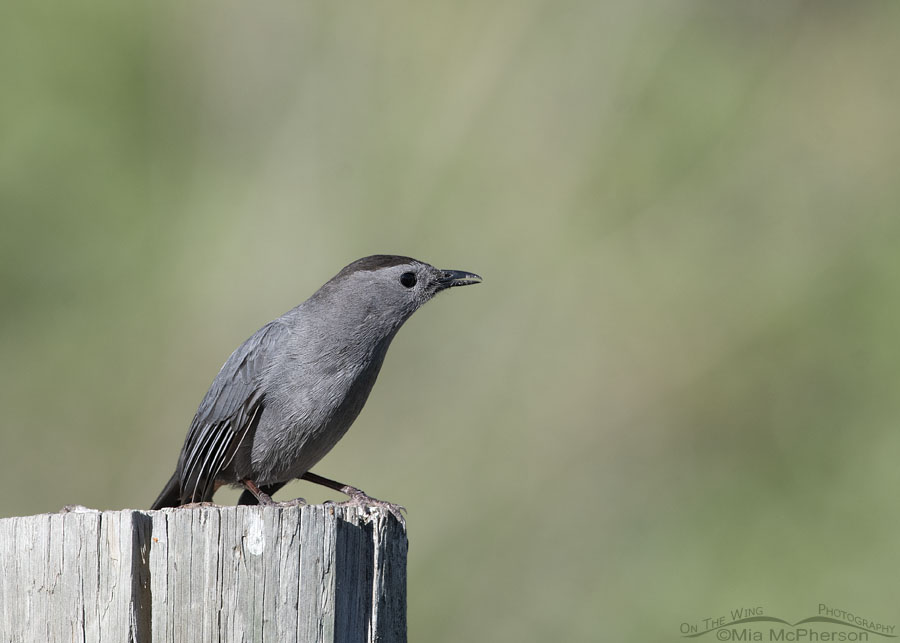
Gray Catbird in a defensive posture – Nikon D500, f8, 1/800, ISO 500, Nikkor 500mm VR with 1.4x TC, natural light
Through my viewfinder I saw the Gray Catbird tense up, crouch down and assume a defensive posture. I wasn’t sure why because I have a limited field of view through my long lens and the viewfinder but I wondered if the other catbird was flying in to try to take the fence post back.
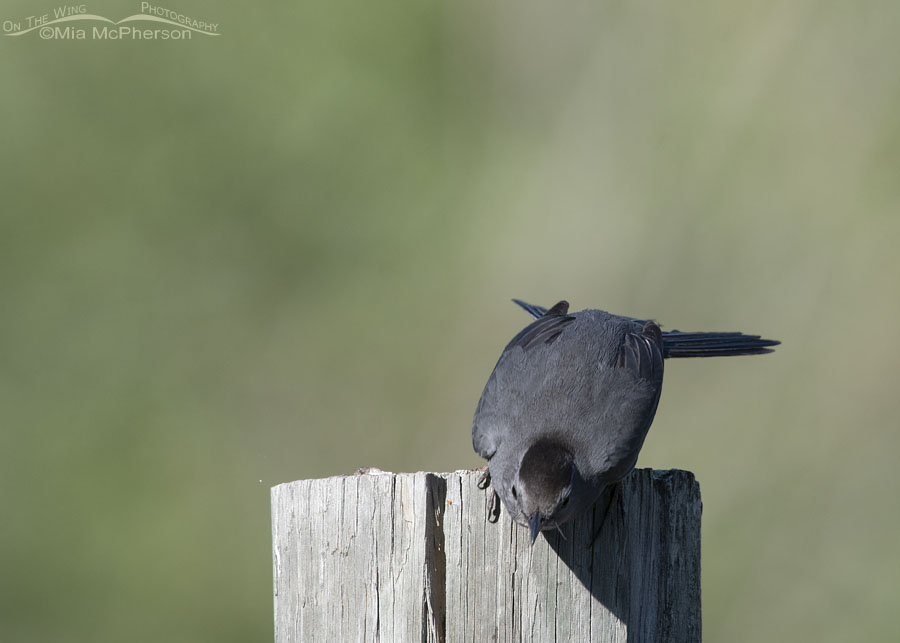
Gray Catbird taking off – Nikon D500, f8, 1/800, ISO 500, Nikkor 500mm VR with 1.4x TC, natural light
Then I saw the Gray Catbird dive off of the fence post towards the ground. As I took this photo I half expected to see another catbird land on top of the wooden fence post so I kept firing in a burst.
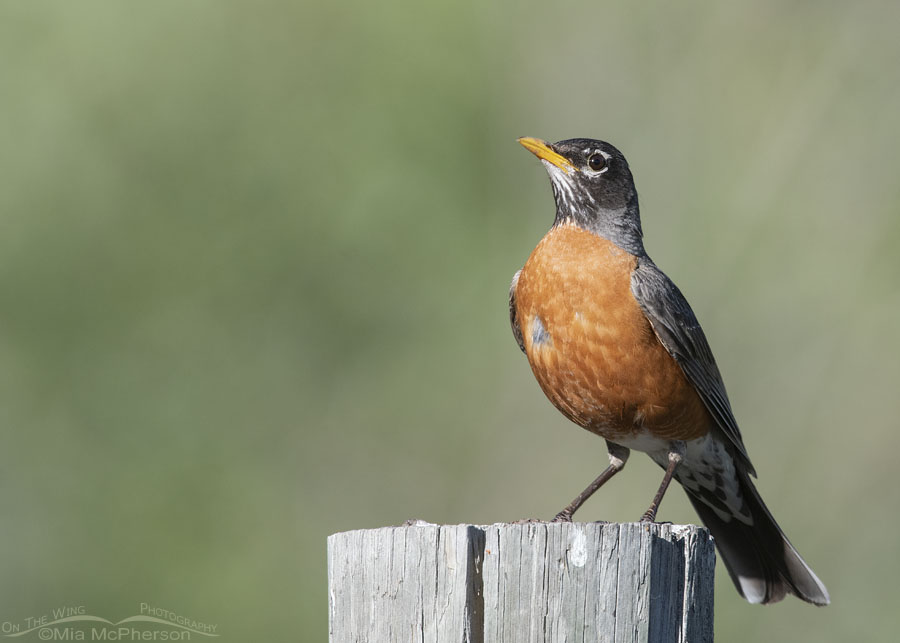
Adult American Robin on a wooden fence post – Nikon D500, f8, 1/800, ISO 500, Nikkor 500mm VR with 1.4x TC, natural light
Instead I was surprised when I saw that it was an American Robin who had landed and taken control of the top of the fence post.
Gray Catbirds weigh in at 1.3 ounces and and are 8.5 inches in length. American Robins weigh in at 2.7 ounces and are 9.25 inches in length. I have a feeling the Gray Catbird didn’t want to take on the larger American Robin and perhaps that is why it dove for cover instead of trying to literally kick the larger bird off of its coveted fence post.
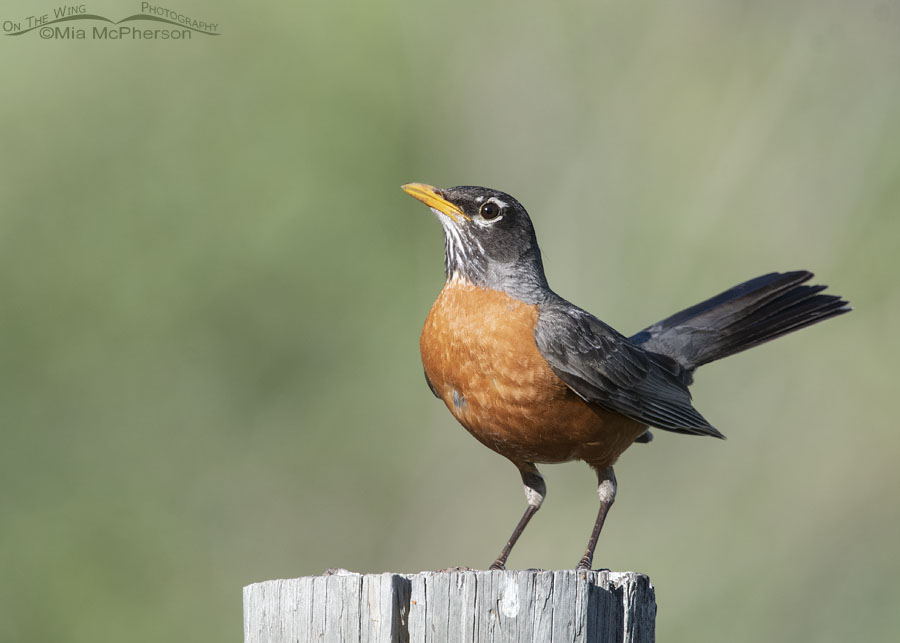
American Robin adult in Morgan County, Utah – Nikon D500, f8, 1/800, ISO 500, Nikkor 500mm VR with 1.4x TC, natural light
The Gray Catbird popped up on a serviceberry bush as the American Robin perched on the fence post. The catbird scolded the robin from a safe distance.
I’m not sure at all why this one fence post seemed to draw both of these species in. There are other fence posts close by and all of them are about the same height. The birds know but I don’t.
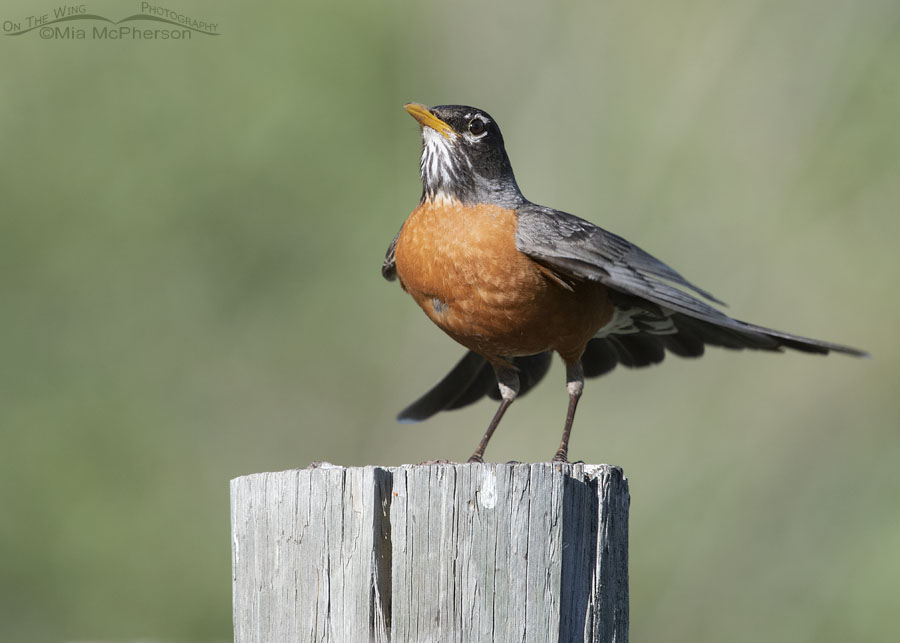
Adult American Robin flashing its tail – Nikon D500, f8, 1/800, ISO 500, Nikkor 500mm VR with 1.4x TC, natural light
I don’t think it was a “King of the castle” kind of behavior going on but what do I know, I am not a bird! As the Gray Catbird scolded from a distance the American Robin flashed its tail.
Did the robin flash its tail at the catbird to communicate its dominance? Was it flashing its tail at the catbird or was there another robin that I couldn’t see that it was communicating with? I just don’t know.
I did have fun photographing them though.
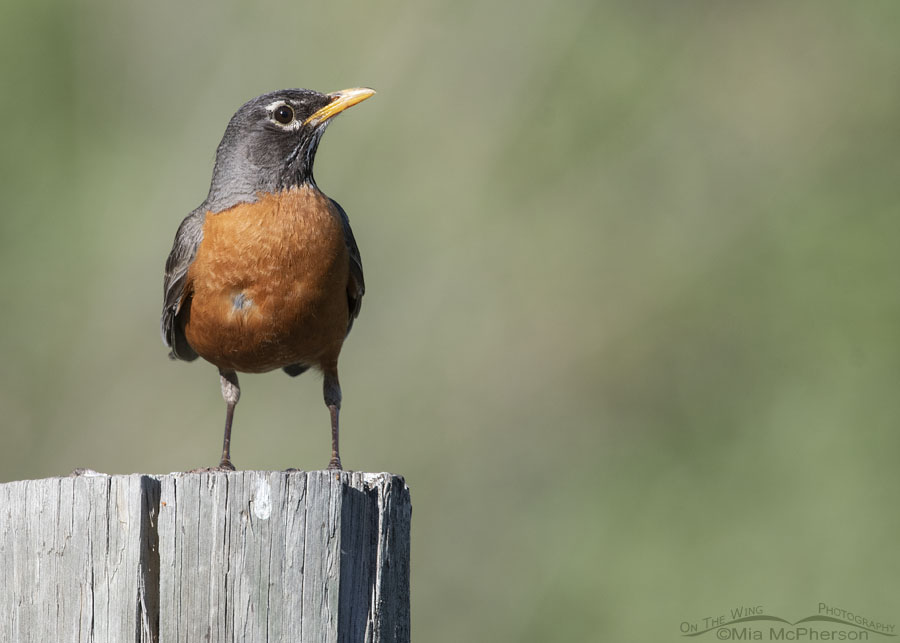
American Robin missing a few breast feathers – Nikon D500, f8, 1/1000, ISO 500, Nikkor 500mm VR with 1.4x TC, natural light
I did notice that the American Robin that took over the top of the fence post was missing a few breast feathers as I photographed it and I wondered of those feathers were missing because the robin had been in a scrape or two before it chased off the catbird.
I took more photos of the American Robin and moved to another location where I still had a view of it. That robin stayed on the fence post for at least another 10 minutes. My attention was focused on other birds by then but I chuckled about the catbird kicking a catbird off of the fence post just to be chased off of it by the robin.
Birds. You’ve got to love them.
Life is good. Stay safe.
Mia
Click here to see more of my Gray Catbird photos plus facts and information about this species. Click here to see more of my American Robin photos plus facts and information about this species.


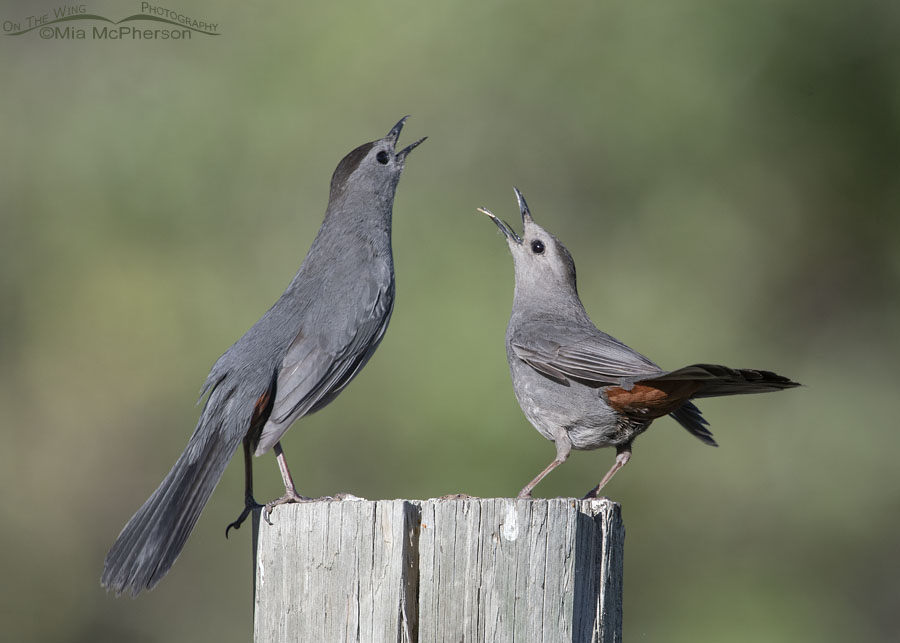
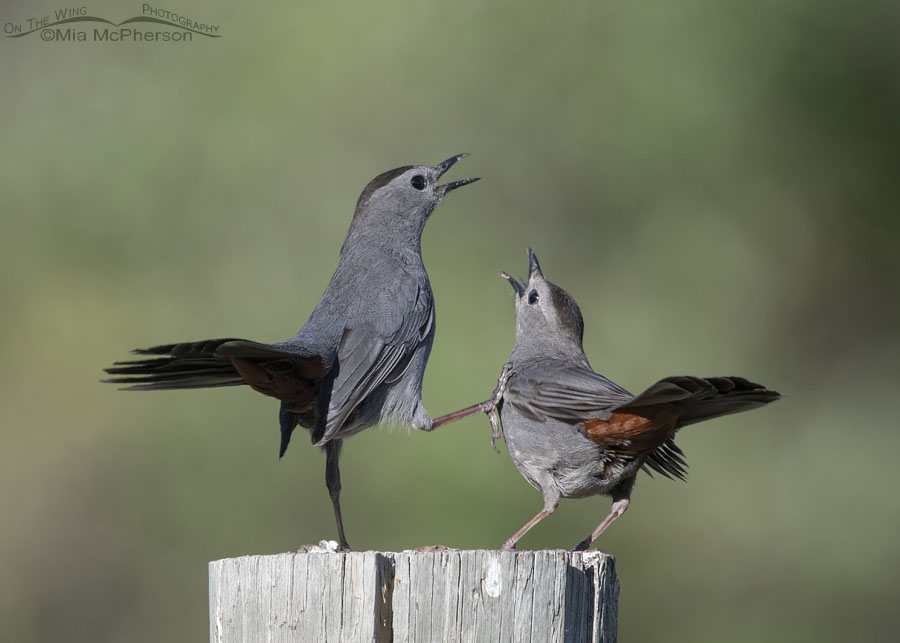
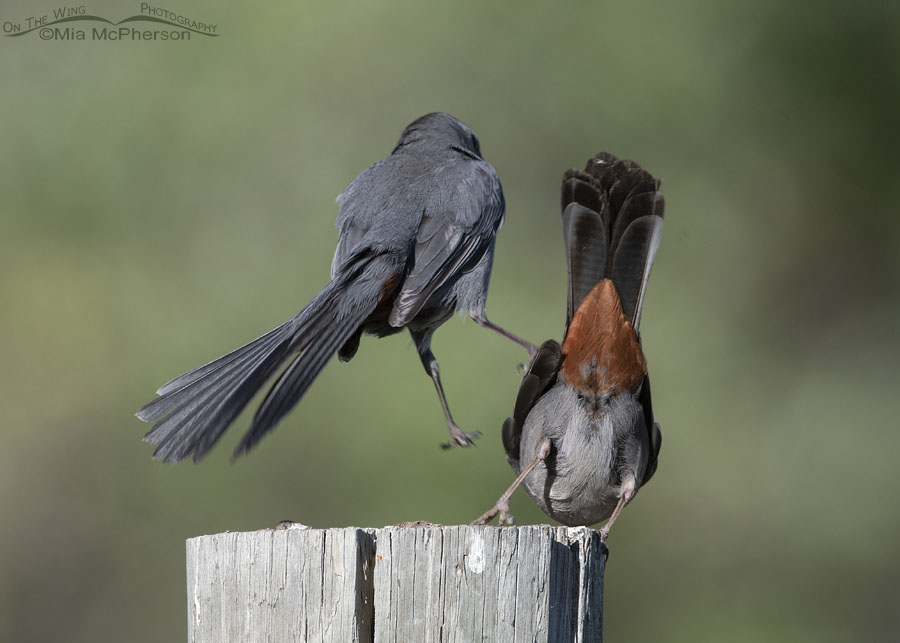
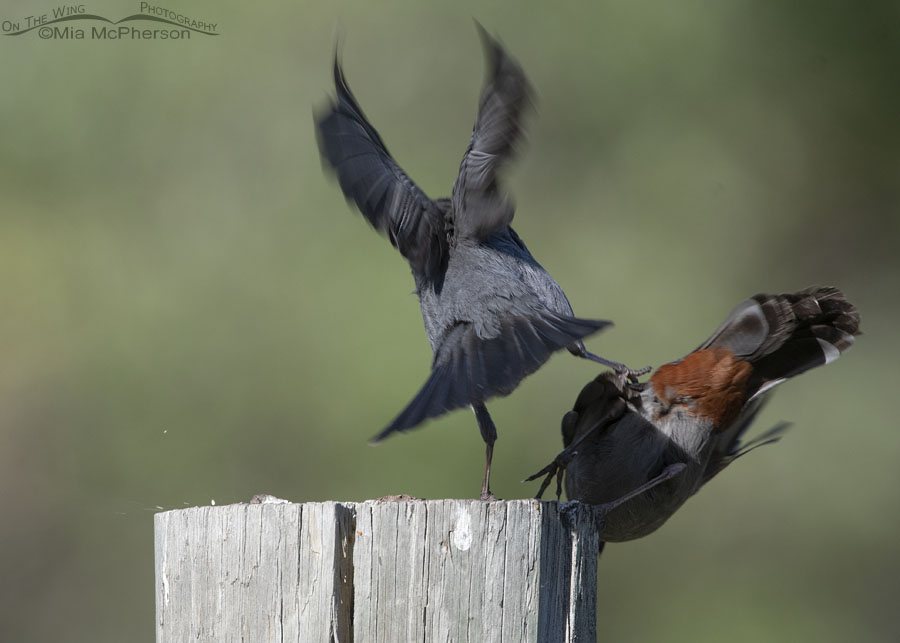
Wonderful series of great action, love the ones with the Catbird using its foot.
That must have been something to see in person! 🙂 Wish there was some way to find out what makes that particular fencepost so desirable.
Pecking order is no empty phrase is it?
Wonder addition to the series. I can imagine what a delight it was to watch!